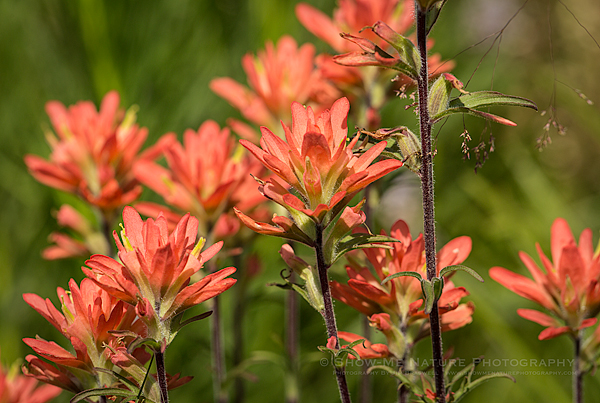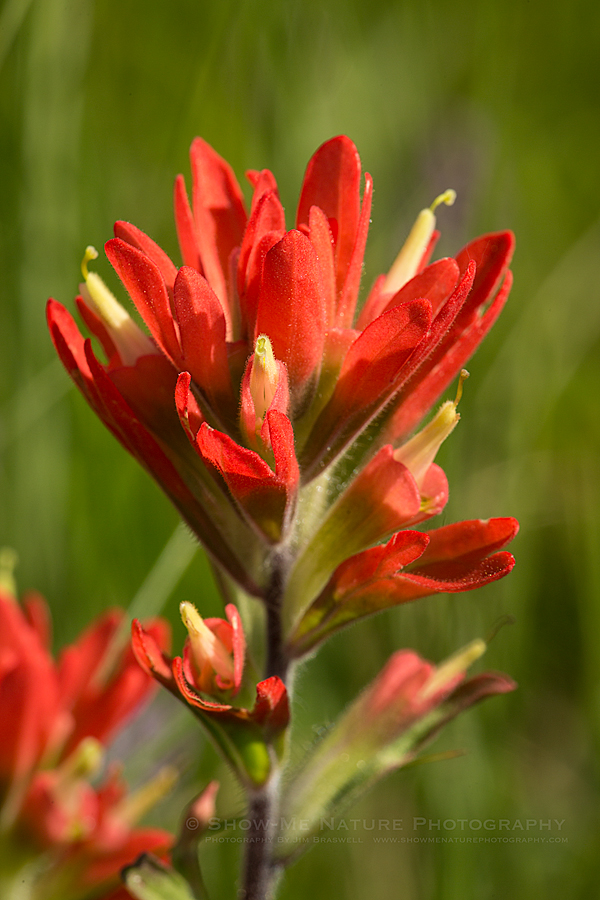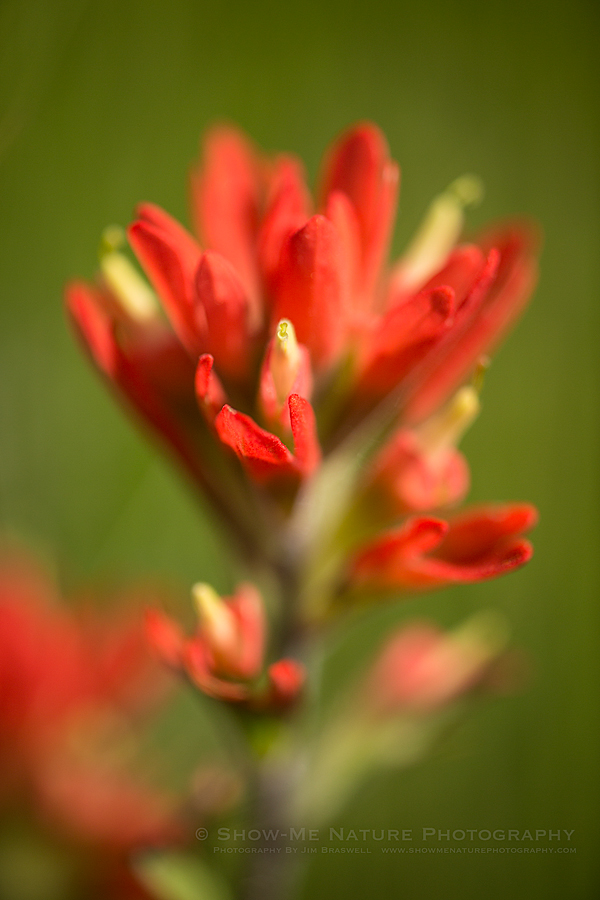Today I’m featuring some more wildflowers from my recent trip to Noah Brown’s Prairie in southern Missouri. The Indian Paintbrush has always been one of my favorite wildflowers to find. Since I’ve been working with a few photographers on using selective focus, I thought this would be a good time to compare the basic ways one can photograph wildflowers.
To quickly photograph a group of wildflowers, we typically shoot a “group shot”, where most, or all of the clump is within focus. This type of image is a good image for documentation purposes or for educational purposes (i.e., for later identifying an unknown wildflower). This type of image usually shows the flower structure, leaf pattern, and other attributes that are useful in identification. Such an image might look like this:
But if you wish to get down to the “nitty gritty”, a macro image is more suitable. Macro images are images captured up close and personal, and will often show very detailed structures and patterns within the flower. And when shooting macro images, you generally have two methods to choose from … and it’s all about the Aperture you have your camera set at. In the first example, a larger depth of field (i.e., the front-to-back distance where the image is in sharp focus) is used so that the resulting image has more of the flower in focus (this image was shot at f/16 aperture):
In the above example, you will notice that the background is not in focus, but it is just beginning to be sharp enough to start seeing the details within the background. This is where one must be careful … if the background is allowed to become too detailed, the eye travels to the background to check it out, which takes our focus (pun intended) from the subject to the background.
In those instances, it is best to use what I call the “more creative” look. By using a shorter depth of field (f/3.5 in the example, below), the background seems to disappear. This results in the eye only seeing the subject, retaining our eye on the subject:
This is one reason I always recommend for those new to macro photography, take lots of shots, while varying the aperture setting. Once the images are downloaded to a computer, compare the various looks with the apertures used, and determine what look you like the best. Over time, you will learn to anticipate what the result will be with different apertures, even before shooting.
Photographic Equipment Used:
- Canon 5D Mark III body
- Canon 180mm, f/3.5 macro lens
- Bogen 3021 tripod with Giotto ballhead
- ISO 200 (all)
- Aperture f/8 (top image), f/16 (middle image), and f/3.5 (bottom image)
- Shutter 1/90 sec. to 1/1500 sec.












